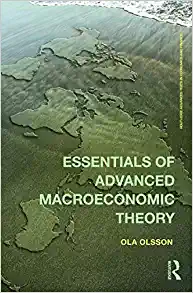Question
Answer all parts of each question as completely as possible. 1. How many ratios of exchange would an individual have to cope with in a
Answer all parts of each question as completely as possible.
- 1. How many ratios of exchange would an individual have to cope with in a barter economy with 276 different items available for exchange? How many absolute prices would there be if one of the items available for exchange were used as a generally acceptable medium of exchange? Explain how the use of money as a unit of account can help reduce transaction costs in this economy. (10 marks)
- Suppose you just deposited $14,000 in your bank savings account. The current real interest rate is 3%, and inflation is expected to be 2.5% over the next year. What nominal interest rate would you require from the bank over the next year? How much money will you have at the end of one year? If you are saving to buy a car that currently sells for $14,900, will you have enough to buy it? (10 marks)
- A $1000 face-value coupon bond has a 10% coupon rate, a maturity of 4 years, and a price of $960.
a. Is the yield to maturity going to be above or below 10%, and why? (2.5 marks)
b. Calculate the present value of the bond when the interest rate is 12%. Must the yield to maturity be above or below 12%, and why? (2.5 marks)
c. Calculate the present value of the bond when the interest rate is 8%. Must the yield to maturity be above or below 8%, and why? (2.5 marks)
d.Calculate the yield to maturity for this bond at the current price. (2.5 marks)
4. The demand curve and supply curve for one-year discount bonds with a face value of $1000 are as follows, respectively.
Bd: P = 1200 - 0.5 Q
Bs: P = 400 + 0.3 Q
Where P = price and Q = quantity.
a. What is the expected equilibrium price and quantity of bonds in this market?
(2.5marks)
b.Given your answer to part (a), what is the expected interest rate in this market?
(2.5marks)
As a monetary policy action, suppose the central bank purchases 100 of the bonds. Assuming the bond demand and money demand are held constant, answer the next two questions.
a. How does the central bank's action affect the bond demand and supply equations? (2.5 marks)
b. Calculate the effect on the equilibrium interest rate in this market as a result of the central bank's action. (2.5 marks)
5. A company has just announced a 3-for-1 stock split, effective immediately. Prior to the split, the company had a market value of $4 billion with 100 million shares outstanding. Suppose the split conveys no new information about the company. Answer the following questions indicating how you arrived at your answer in each case.
a. What is the value of the company? (2.5 marks)
b. What is the number of shares outstanding? (2.5 marks)
c. What is the price per share after the split? (2.5 marks)
d. If the actual market price immediately following the split is $20 per share, what does this tell you about market efficiency? (2.5 marks)
6. Answer all five parts of this question.
a. How does the free-rider problem aggravate adverse selection and moral hazard problems in financial markets? (2 marks)
b. When can a decline in the value of a country's currency exacerbate adverse selection and moral hazard problems? Why? (2 marks)
c. Would adverse section and moral hazard still arise in financial markets if information was not asymmetric? Explain. (2 marks)
d. How does the existence of asymmetric information provide a rationale for government regulation of financial markets? (2 marks)
e. What steps can the government take to reduce asymmetric information problems and help the financial system function more smoothly and efficiently? (2 marks)
7. Describe how, in recent years, banks have become multi-service institutions, and explain how there has been an erosion of the "four pillars" of finance. (10marks)
8. Suppose Paul has the following deposits with ABC Bank, a member of CDIC.
Account type | Funds (in Canadian dollars except where noted) |
Chequing account | $10,000 |
Savings account | $80,000 |
USD term deposit | $50,000 |
3-year GIC | $100,000 |
7-year GIC | $80,000 |
a. In the event of bank failure, how much of Paul's deposits is insured by the CDIC? (3 marks)
b. If the CDIC decides ABC Bank is too big to fail, what will happen? Of the payoff method and purchase-and-assumption method, which one will CDIC use? Why? (5 marks)
c. Why might the CDIC declare ABC bank too big to fail? (2 marks)
9. What is meant by the term virtual banking? Outline the advantages and disadvantages of virtual banking to the public. (10 marks)
10. Explain the difference between the following.
a. Chartered banks and trust and loan companies (2.5 marks)
b. Life insurance companies and property and causality insurance companies (2.5 marks)
c. Mutual funds and money market mutual funds (2.5 marks)
d. A mortgage and mortgage-backed security (2.5 marks)
Step by Step Solution
There are 3 Steps involved in it
Step: 1

Get Instant Access to Expert-Tailored Solutions
See step-by-step solutions with expert insights and AI powered tools for academic success
Step: 2

Step: 3

Ace Your Homework with AI
Get the answers you need in no time with our AI-driven, step-by-step assistance
Get Started


